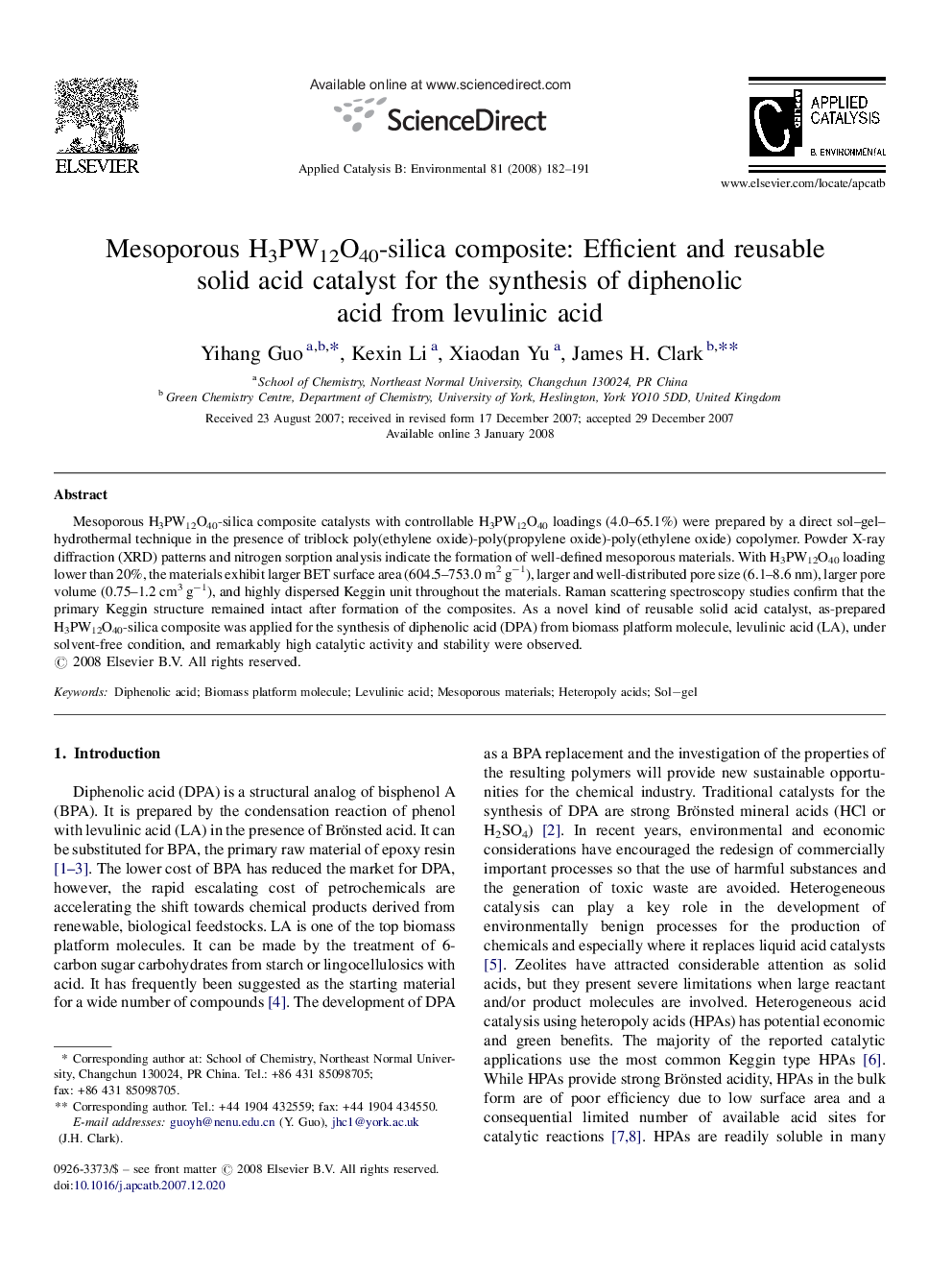| Article ID | Journal | Published Year | Pages | File Type |
|---|---|---|---|---|
| 48371 | Applied Catalysis B: Environmental | 2008 | 10 Pages |
Mesoporous H3PW12O40-silica composite catalysts with controllable H3PW12O40 loadings (4.0–65.1%) were prepared by a direct sol–gel–hydrothermal technique in the presence of triblock poly(ethylene oxide)-poly(propylene oxide)-poly(ethylene oxide) copolymer. Powder X-ray diffraction (XRD) patterns and nitrogen sorption analysis indicate the formation of well-defined mesoporous materials. With H3PW12O40 loading lower than 20%, the materials exhibit larger BET surface area (604.5–753.0 m2 g−1), larger and well-distributed pore size (6.1–8.6 nm), larger pore volume (0.75–1.2 cm3 g−1), and highly dispersed Keggin unit throughout the materials. Raman scattering spectroscopy studies confirm that the primary Keggin structure remained intact after formation of the composites. As a novel kind of reusable solid acid catalyst, as-prepared H3PW12O40-silica composite was applied for the synthesis of diphenolic acid (DPA) from biomass platform molecule, levulinic acid (LA), under solvent-free condition, and remarkably high catalytic activity and stability were observed.
